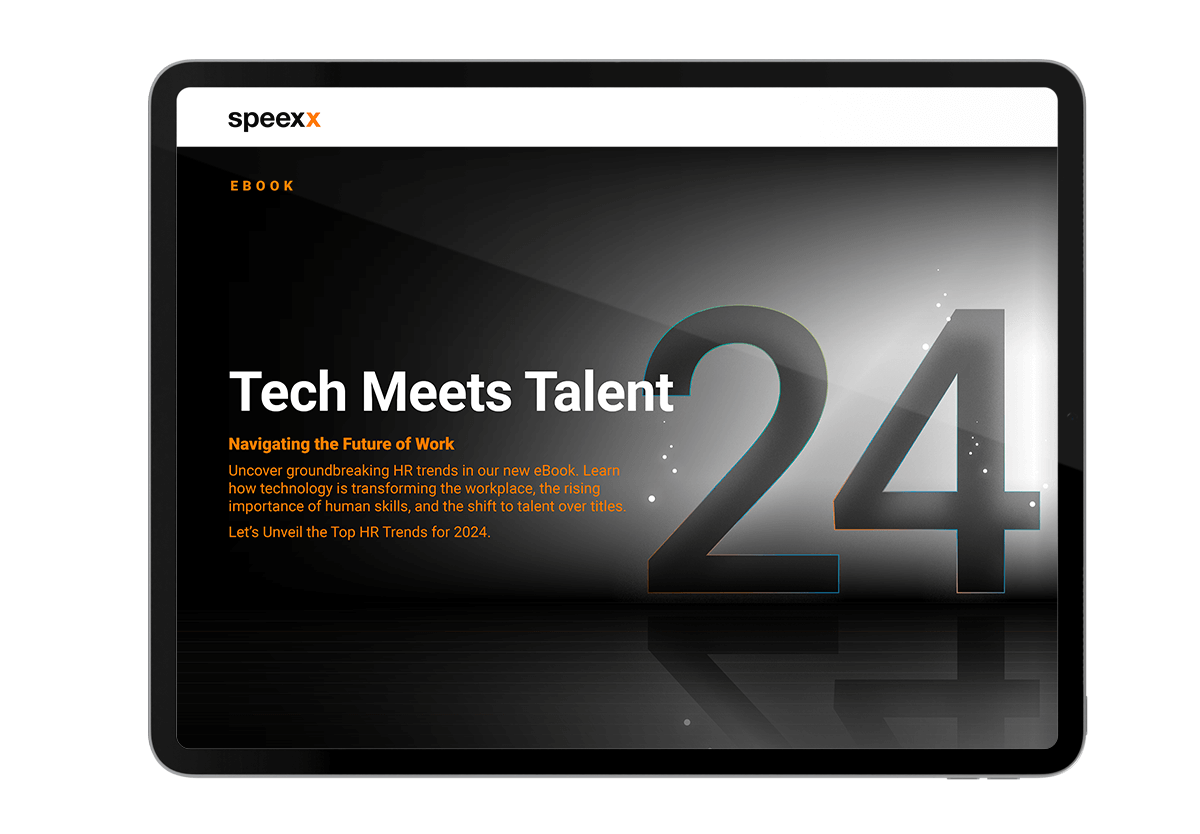For most, the past year has been, without a doubt, far from normal: 2020 and most of 2021 have proven to be challenging, both personally and professionally. In addition to health and job concerns, people all over the world had to quickly adapt to working from home, learning from home, and teaching from home – while simultaneously serving as caretakers, homemakers and full-time babysitters.
If you’ve ever considered developing a comprehensive well-being program for your organization, now is the time to get one up and running. Demanding times like these are taking a toll on everybody. No matter whether you’re an individual contributor or an executive board member, your mindset and state of well-being play quite a big role in how you show up and perform at work; the same goes for your colleagues. Healthier, well-balanced employees are better suited to reach their goals – and, collectively, help the company reach its goals.
In this post, we’ll walk you through how to easily develop a comprehensive well-being program for your organization so you can quickly and seamlessly incorporate these steps into everyday processes.
Why is a well-being program for employees important?
Employee well-being programs are commonly referred to as a collection of initiatives within an organization designed to promote a healthy lifestyle and mindset among employees. There are many types of initiatives that address different areas and dimensions of well-being; and when included into company and team processes, they can prove to be very beneficial. You might see an effect when it comes to recruiting and maintaining employees, for example.
Furthermore, at the core of every good well-being program is behavior change.
With the right knowledge, tools, and social support, people change behaviors. Well-being programs are good at helping people adopt and maintain healthy behaviors, which in turn, leads to lower health risks, and – for companies and employees alike – fewer health care costs.
On a daily basis, well-being programs can help to bring teams together and feel noticed in the workplace. In fact, 80% of employees at companies with robust well-being programs at work feel more engaged and cared for by their employers. Again, this makes them more likely to stay at their place of work; wellness programs demonstrate goodwill from an employer towards employees, therefore tending to have a positive effect on employee morale.

Find out more here
Kick-start your well-being program with Montserrat Ventosa
Montserrat Ventosa, Internationalization Director at Universidad Tecmilenio, aims to help organizations build extraordinary places to work. She heads a team that focuses on meeting this goal, they are based in the Universidad Tecmilenio’s (UTM) Well-being & Happiness Ecosystem (part of the Monterrey Institute of Technology and Higher Education, one of the largest, most reputable systems in the Americas).
Montserrat recently conducted a Speexx Masterclass webinar, entitled How to Drive and Monitor Well-being in the Digital Workplace. During this webinar, she presented five strategies companies can adopt to raise levels of well-being in their organizations.
If you’re an HR or L&D director: Montserrat explained how you can obtain evidence of the improvements in your team’s resilience levels, as well as their commitment to excellence.
In addition, she discusses how to foster positive emotions and positive relationships within the workforce that can help kick-start well-being programs in organizations that don’t yet have one.
Developing a comprehensive well-being program
Creating a well-being program does not have to be a difficult task. In fact, the process should be as simple as possible (remember: part of well-being is reducing stress!).
Make sure the planning, creation and implementation is not something that adds extra workload for your employees on top of other everyday work tasks but is instead integrated into processes that you are all already doing. Develop simple programs to help increase engagement and interest in your well-being program. Consider the following.
1. Choose your collaborators and arguments towards your well-being program
When rolling out a brand-new well-being program, you may find it difficult to break this pre-conceived notion that well-being is only about spending more time during breaks getting to know colleagues better. Or that you’re championing some kind of campy, forced-positivity approach.
One of the very first things to do is identify evangelists or allies within the company who you know can help to bring your program to life. Some organizations find that setting up a wellness committee with wellness “champions” who are respected by their peers can help motivate fellow employees.
2. Support your well-being program with hard facts
Well-being always translates better with results that come directly from data. Employees are more likely to buy into a new program that is supported by hard facts and figures. Your board is also more likely to agree to a well-being program if you can prove increased productivity, reduced costs, and so on – and there’s already a lot of data out there on this topic.
And once your program has been rolled out, it’s important to continue to supplement your efforts with stats; while the results of a well-being program may not be immediate, you’ll continue to gain support for it when you do, in fact, start to show your organization data (even more “informal” data, like anonymized surveys about people’s attitudes toward work – you might run one before and one during the course of your well-being program rollout).
Note that creating a well-being program is not about being overly ambitious and wanting to change the entire culture of the company through yet another program. Remember, the goal is to reduce stress and incrementally improve everyone’s experience in the workplace.
Montserrat Ventosa summarized it: “In the end, you are over promising and under delivering. It is better to under promise and over deliver with results.”
As HR and L&D professionals, it is important to communicate that the idea behind well-being is not reduced to the stereotypical ideas of meditation and mindfulness (nothing wrong with them, though certainly meditation, we all know, isn’t for everyone; that said, it’s worth pointing out that mindfulness – or at least reduced stress – has been proven to improve memory and focus, reduce emotional reactivity, improve cognitive flexibility, and enhance self-insight!).
The employees’ well-being – overall outlook, way of viewing and moving through the world, mental and physical health, sense of security – is something that directly affects clients and colleagues in their daily interactions. Once someone feels more balanced, it is more likely that he or she will have improved working relationships.
3. Start planning your well-being program with your core leaders
One of the most important things to remember when creating your own well-being program is that the planning is best done in co-creation with your leadership team.
It is important to spend that first initial time period investing in designing the program with your core leaders along with middle management. Completing the planning process together will help to fully convince them about the idea of the importance of a well-being program in the workplace. As they are involved in the process, they will easily able to see how the program progresses.
It’s best to gain a positive affirmation from the CEO and make sure the leader at the helm is on board with the program. Ideally, the CEO and other executives would demonstrate a commitment to taking on a well-being program. Furthermore, your colleagues will be more likely to buy into a new program if the support for it comes from the top, and leaders practice what they preach.
4. Maintain authenticity and well-being culture within the workplace
When developing a well-being program, it is important that the company culture and values are fully represented. Creating a safe space where everyone can express themselves and therefore work to improve their mental states is a crucial part of a well-being program.
Help to amplify the true nature of what it means to be a part of your organization. Recognizing those who exemplify perfect company cultures and values increases awareness around the authenticity of the company culture and what exactly it entails. In doing so, your well-being program will showcase your company in the best light and lead to a state of well-being.
Consider the following:
- Incentives – Some companies may want to offer incentives. If you’re an organization with lots of tech-loving employees and know a lot of them might use Apple Watches or other health-monitoring devices, you might offer gift cards, prizes or other rewards when people meet their daily walking or standing goals.
- Competition – A bit of friendly competition also goes a long way. If you have a (healthily) competitive workplace, you may also choose to gamify your well-being or wellness programs – establishing a dashboard that positively highlights when someone finishes an exercise program, or concludes a coaching session with another colleague, and so on.
5. Track and maintain well-being goals
Monitoring the progression of your well-being program along the way is important for its development. Now that you have implemented some of these points in your organization, you may be asking, how can I measure the success of these steps towards well-being in the workplace?
Staying simple and creating a quick checklist to keep up with what you accomplish along the way is a great way to start. By monitoring your improvement in a physical way, you can then easily share and show what you have learned from it. Monitoring your progress is also important to prove the skills you have learned throughout the process and improve on them later.
It is important to keep a perception of what is being accomplished. On the one hand you have your business results and your objectives, and on the other, your well-being measures. Along your well-being journey it could also be that you learn other things that are not necessarily about well-being but that could still be useful in monitoring and achieving your goals.
6. Measure your well-being program success
A way to measure the success of your well-being program is conducting regular surveys across teams. Conducting this analysis on a regular basis will give you a comprehensive set of data to go off when looking at what the change over time was in the well-being of each employee. These surveys can be a simple online survey that each employee completes every 5 business days.
The conclusive analysis should be however collective and not individual in order to show the data as a whole. You may also opt to segment the results by business unit, verticals or demographics. Depending on the level of customization you would like to put into the surveys, it depends on the company overall.
Remember that we’re still in a pandemic: Your well-being program must take health and hygiene regulations into account, or you might end up stressing your employees out even more. There are many tools and resources online that you can choose from in order to roll out a digital or at least hybrid well-being program.
Reward Gateway, for example, is a company that provides various tools that helps their employees reach a state of well-being. Whether its access to content on well-being, or a fun club to help people stay active and clear their minds, every part works step by step to provide employees with some excellent, flexible options.
Don’t ignore soft-skills when it comes to well-being
So how does well-being relate to soft skills within the workplace? Well, first of all, well-being is, in itself, a soft skill.
Certain aspects of well-being, like positivity, are soft skills. For instance, positive relationships, positive influence on others, relatability, social presence, are all examples of soft skills related to well-being.
Overstressed employees might find it more difficult focusing on other skills that require complete concentration, such as programming or public speaking.
It is important that employees are in such a mindset where they are not stressed or over-worked. The point in which one can grow exponentially starts with a well-being mindset and a feeling of safety, security and confidence in the workplace.

Read more here
Integrating learning into your well-being program
Learning, along with training, is a crucial element to creating and fostering a culture for a great well-being program. Integrating learning on how to reach a state of well-being and combining it with continuous training helps to integrate well-being more into everyday workplace practices.
Ultimately, elevating the entire organization’s well-being is a better indicator of a healthy company – one where people are inspired, stay motivated and will more likely reach business goals.
There are many different ways to incorporate well-being learning and training within teams and collaborate as a community. Integrating this into your organization is a crucial part of developing a comprehensive well-being program. As long as the learning momentum is kept up at a steady pace, holding workshops or even mentoring programs in your workplace will show progress over time.
Moving towards a well-being culture
Well-being programs are something that are gaining more traction in HR and L&D as society at large becomes better-versed in how we can better operate in the workplace, in addition to increased focus on how to more safely and healthily do our jobs (in and out of a pandemic).
Offering a detailed but simple well-being program to employees is one effective way to demonstrate the importance of mental health for our workforce. Implementing a well-being program in your organization will help increase employee productivity, communication across teams, and grow the company culture overall.





